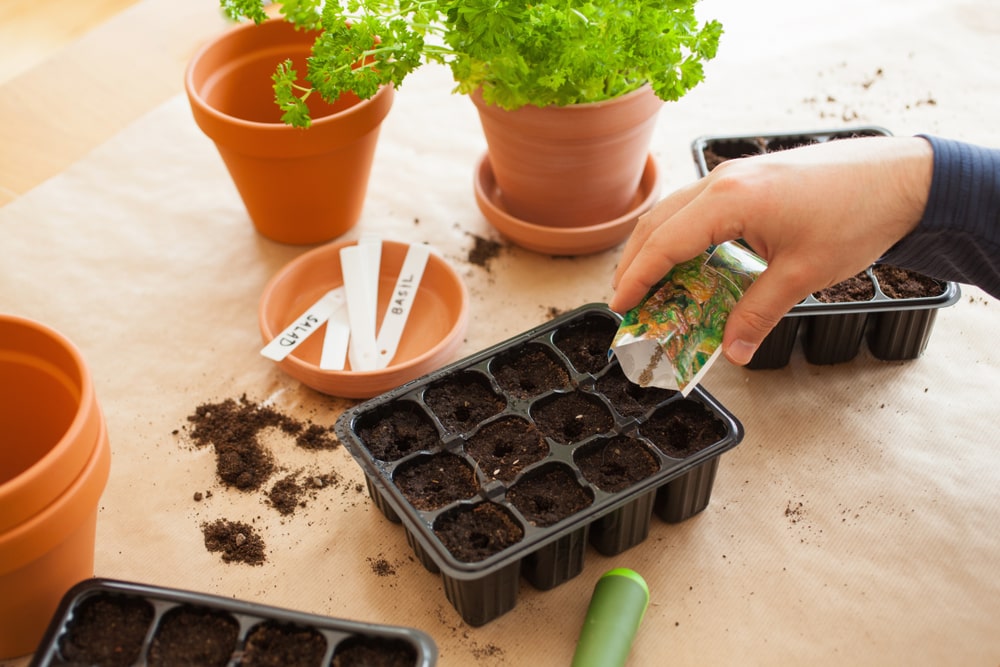This is a great time to start thinking about starting seeds. Seed packets will tell you to start six to eight weeks before your average last frost date for tomatoes and peppers. Some people will tell you mid-April is our last frost date. I’ll remind you that last year we had frost after the first of May, so I’ve decided to count back from May 1st just to be safe, and I’m keeping my eye on the long-range forecast.
My favorite tomato suggests starting inside four to six weeks before the last frost. That’s mid-March in my book. My favorite pepper says to start indoors eight to ten weeks before the last frost date—mid to end of February.
When it comes to starting seeds indoors, there are lots of options to choose from. There are trays with individual cells for each seed that even come with their own greenhouse lid. There are pots made of compressed peat which means that later you can plant the pot and all in the ground. And Botanical Interests even offers pots of recycled paper—again, you can plant pot and all.
There are little pellets of compressed peat that expand when soaked in water to make convenient little planters. All of these are easy and convenient. You can always start seeds in leftover plastic pots or trays that you already have. If you do that, wash them thoroughly first and be sure to use a special seed-starter soil mix. A seed starter soil is sterile, finely milled, and moisture retentive.
Many seeds germinate faster with bottom heat. You can buy special seed-starting heat mats that generate a constant low heat. I have even set a tray of just planted seeds on the warm spot on top of the refrigerator. Once the seeds sprout, I move them to a sunny window. I have a customer who said they used an old electric blanket on low. I don’t think I’ve got enough room in my sunny windows.
Almost all seedlings need light to perform well—the more light, the better. Even shade-tolerant plants like impatiens can take some sun in the seedling stage—starting indoors in February or March, the days are shorter than summer days and the sunlight is weaker.
If you lack a good sunny window, you may want to consider artificial lighting. Do read the directions on your grow lights for how far away they should be from your plants and how long they should be on.
Some seeds should not be started indoors. Beans, peas, cucumbers, squash, and melons sprout quickly and grow fast so should be direct sowed in the garden. Root vegetables like carrots, beets, turnips, and radishes, do not transplant well so should always be direct sowed. When in doubt, consult the back of the seed package.
I’ll be starting my peppers in a couple of weeks. It’ll be nice to think Spring, for a change. I’ve already selected my favorite varieties (as well as a couple of new ones). All I need is a couple of boxes of paper seed starting pots and I’m ready to go.
Now all I have to do is remember to shut the door to the spare room so the kitties don’t decide to sleep in the trays…

